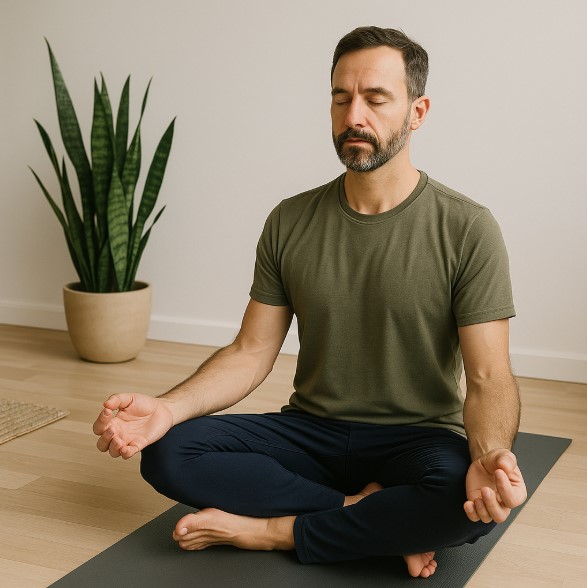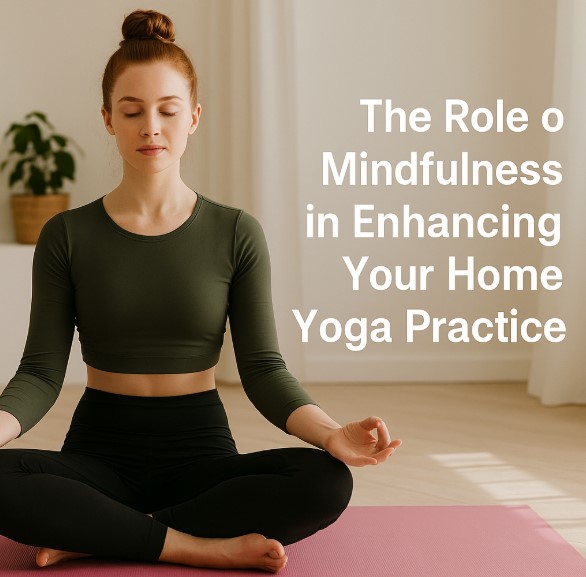The Role of Mindfulness in Enhancing Your Home Yoga Practice
Yoga is more than just a physical practice—it’s a journey of self-awareness, balance, and inner peace. While the convenience of home yoga has made it easier to incorporate into our daily lives, it also presents unique challenges, particularly when it comes to staying present. At EPRANIC, we believe that mindfulness is the cornerstone of a truly transformative home yoga practice. By cultivating a mindful approach, you can deepen your connection to each movement, reduce stress, and unlock the full potential of your practice—all from the comfort of your own space.
Why Mindfulness Matters in Home Yoga
When practicing yoga at home, it’s easy to get distracted. Without the structured environment of a studio or the energy of a group class, your mind might wander to your to-do list, the noise outside, or even self-criticism about your performance. Mindfulness—the practice of being fully present in the moment—helps you anchor your attention to your breath, body, and intentions. This focus not only enhances the mental benefits of yoga, such as stress relief and emotional clarity, but also improves the quality of your physical movements.
For example, in a pose like Child’s Pose, mindfulness allows you to notice the subtle sensations in your hips and lower back, helping you release tension more effectively. In a more dynamic sequence, such as a Sun Salutation, staying present ensures that each transition is intentional, reducing the risk of rushing through movements and missing their benefits. A 2024 study in the Journal of Mindfulness Studies found that practitioners who incorporated mindfulness into their yoga sessions reported a 30% greater reduction in stress levels compared to those who focused solely on the physical aspects.

Building Mindfulness Through Simple Practices
You don’t need to be a meditation expert to bring mindfulness into your home yoga practice. Start with small, intentional steps that ground you in the present moment. Before you begin your session, take a few minutes to sit quietly and focus on your breath. Inhale deeply for a count of four, hold for four, and exhale for four. This simple breathing exercise, known as box breathing, can calm your mind and set the tone for a mindful practice.
During your practice, pay attention to the sensations in your body as you move through each pose. In a seated forward fold, notice how your hamstrings feel as you hinge at your hips, and resist the urge to push past your limits. Instead, use your breath to guide you deeper into the stretch, exhaling as you release tension. By focusing on these details, you create a stronger mind-body connection, which is at the heart of yoga’s transformative power.
Another effective way to cultivate mindfulness is to set an intention for your practice. This could be as simple as “I will move with gratitude” or “I will let go of stress.” Having a clear intention helps you stay focused, especially when distractions arise. Over time, these mindful habits can turn your home yoga practice into a sanctuary of calm and clarity.
How Technology Can Support Mindful Yoga
While mindfulness is an internal practice, technology can play a supportive role in helping you stay present during your home yoga sessions. Apps with guided meditations or ambient sounds can create a calming atmosphere, making it easier to focus. For example, playing soft nature sounds—like a gentle stream or birds chirping—can help you tune out external distractions and immerse yourself in the moment.
Technology can also help you maintain mindfulness by ensuring that your physical practice supports your mental focus. When you’re worried about whether you’re performing a pose correctly, it’s hard to stay present. This is where tools like AI-powered yoga apps come in, offering subtle guidance to keep your movements safe and effective. In a related article, Real-Time Feedback in Yoga: Why Home Practice Isn’t Complete Without It, we explored how technologies like on-device pose detection can act as a virtual coach, providing instant cues to adjust your alignment. By taking the guesswork out of your form, these tools free up your mental space to focus on the present moment, enhancing both your mindfulness and your overall practice.
The Benefits of a Mindful Home Yoga Practice
A mindful approach to home yoga offers a wide range of benefits. Mentally, it helps reduce anxiety and improve emotional resilience. By staying present, you train your mind to let go of worries about the past or future, creating a sense of peace that carries into your daily life. Physically, mindfulness ensures that you’re moving with intention, which can lead to better alignment, fewer injuries, and more effective stretches.
Mindfulness also fosters a deeper sense of self-compassion. At home, without the pressure of a group setting, you have the freedom to listen to your body and honor its needs. If you’re feeling tired, you might choose a restorative practice over a vigorous flow—and mindfulness helps you make that choice without judgment. This self-awareness can transform your relationship with yoga, making it a sustainable and joyful part of your routine.
Creating a Mindful Yoga Space at Home
To support your mindful practice, consider creating a dedicated space for yoga in your home. It doesn’t need to be large—just a quiet corner where you can unroll your mat and feel at ease. Add elements that inspire calm, such as a plant, a candle, or a small speaker for playing soothing music. Keep your space free of clutter to minimize distractions, and if possible, choose a spot with natural light to uplift your mood.
At EPRANIC, we’re passionate about helping you create a home yoga practice that nurtures both body and mind. By combining the timeless practice of mindfulness with modern tools, we aim to make every session a moment of growth and connection. Because when you practice yoga mindfully, you’re not just moving—you’re truly evolving.
Conclusion
Mindfulness is the key to unlocking the full potential of your home yoga practice. By staying present, you can deepen your movements, reduce stress, and cultivate a sense of inner peace that extends beyond your mat. While technology isn’t a replacement for mindfulness, it can support your journey by creating a distraction-free environment and ensuring that your physical practice aligns with your mental focus. As we discussed in Real-Time Feedback in Yoga: Why Home Practice Isn’t Complete Without It, tools like AI-powered feedback can enhance your practice by keeping your movements safe and effective, allowing you to fully immerse yourself in the moment. Together, mindfulness and technology can transform your home yoga practice into a powerful tool for growth and well-being.

